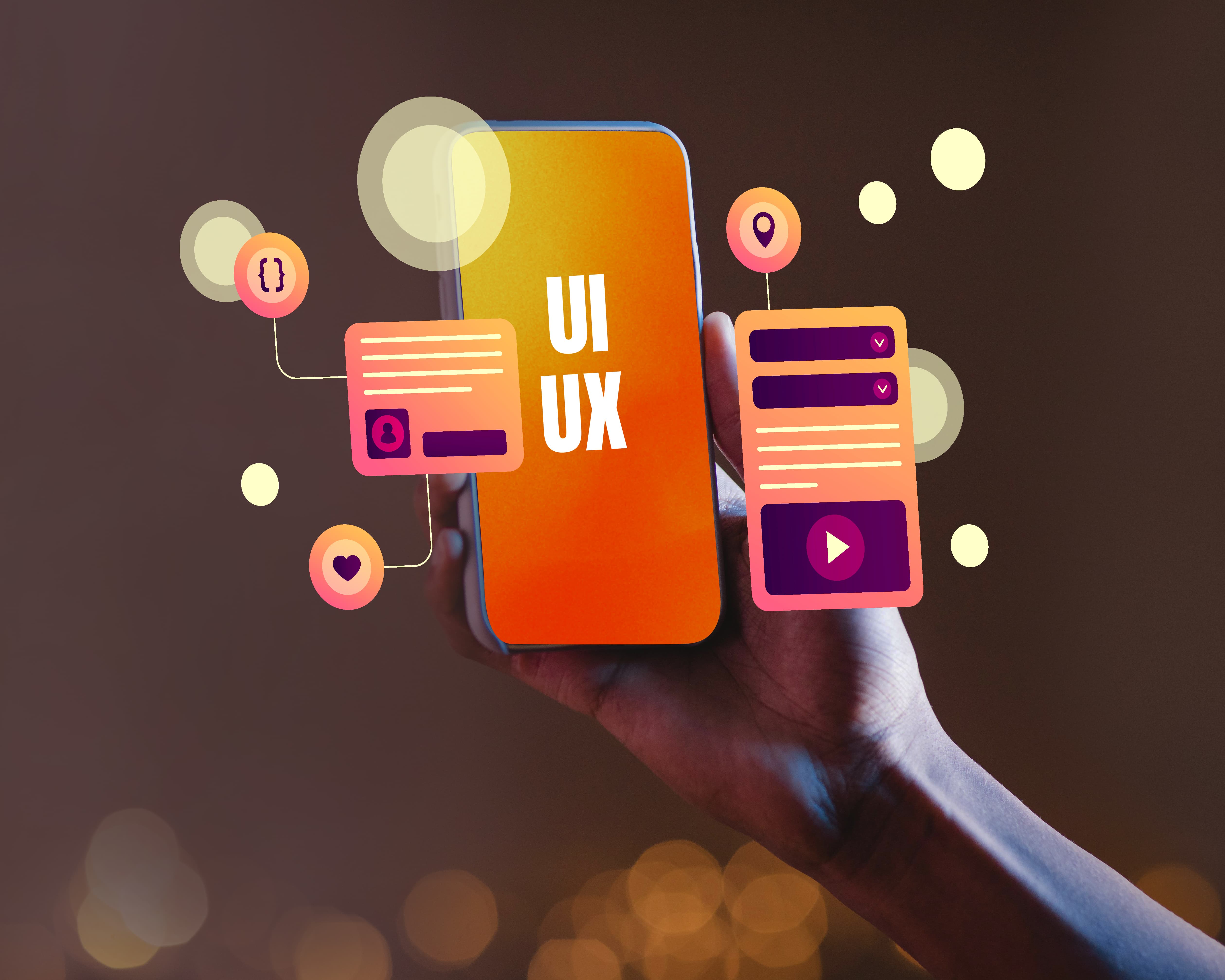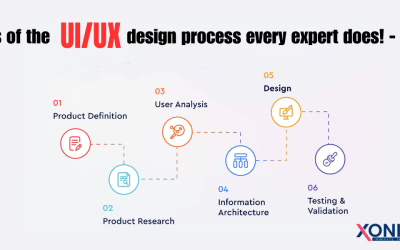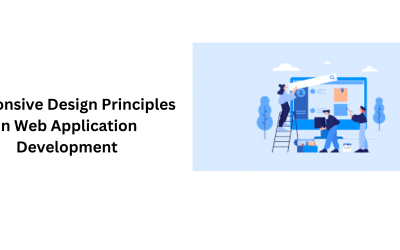In an age of technological advancement, user experience (UX) is now integral to creating digital goods. In 2024, UX Design is at an exciting point of transition. Following a series of changes and threats in 2023, which was marked by a market decline that saw an increase in job opportunities and salaries, the landscape is set for a major change. While the first known UI UX Designer created the touch tone keypad for the telephone, today’s designers build seamless cross-device experiences, hyper-personalize at scale, and program intuitive micro-interactions that guide users through tasks.
In the same way, the number of UX designers has steadily increased. Design teams are growing in size to improve the level of UX maturation, which is a requirement for an effective digital presence. Nowadays, all companies are classified as “tech companies” in today’s technologically advanced world because of the need for an online presence.
UX developers design and create seamless mobile and web user experiences that allow users to reach their goals. They pinpoint user-related issues, conduct studies, and design digital interfaces for ease of use retention, user-friendliness, and goal-fulfillment.
What Is UX Design?
The user experience (UX) is the journey users take when interacting with a service or product. UX design means creating products and services that deliver satisfying experiences to users. It encompasses various aspects of product creation, such as the branding process, usability, and style.
One approach to considering UX designs is to look at the whole process or experience that a person experiences while interacting with a service or product. How is the user first introduced to the product or service through ads, blogs, or other methods? What type of interaction will the customer get with the brand? What does the user experience following the interaction? These questions and many more are crucial factors in UX design.
What UX Designers Do?
UX Designers create web pages and apps that please both users and the client or business the designer works for. They undertake research and design people for users and websites or products. They study the information and present workshops and presentations to design team members and customers.
When the UX Design Agency conducts interviews and tests, the design team utilizes the data to develop an interface that meets people’s wants and is simple to operate. Wireframes and prototypes are created to evaluate the design. Based on the team’s requirements, the prototypes can be basic low-fidelity pen and paper drawings or more high-fidelity online digital sketches. The process of designing is to be collaborative and iterative. Teams work together to create the design instead of one person making the entire design. The product is continually tested, and the design evolves with information changes.
The Rise Of Artificial Intelligence In UX Design
The rising popularity of Artificial Intelligence (AI) is changing the face of UX Design, bringing incredible challenges and opportunities. By 2024, the incorporation of AI into UX Design will become not an option and a trend but an essential requirement. The new world demands that UX professionals be aware of AI technologies and utilize them with creativity and innovation in their work.
The effect of AI on UX Design is multifaceted. One side is that AI tools automate regular tasks, such as creating several design versions and analyzing vast research information. Designers are free to concentrate on the more strategic and creative elements. However, AI is creating new areas for exploring, such as adaptive and personal user interfaces, which can learn and adapt based on the user’s interaction.
Integration of AI into UX Design Services also poses significant problems. The most important is the necessity for constant change. UX experts must be ready to keep learning about the latest tools and methods and staying up to date with the rapid advancements of AI technology. That means the capacity to adapt and learn has become just as essential as traditional technical abilities.
Additionally, AI is opening up many new possibilities within UX Design. Through AI, new areas of design and research may emerge, including ethical algorithm design, user privacy, and creating truly customized user experiences. These are only a handful of the areas where UX designers can use their expertise and knowledge to influence the future of interaction between humans and computers.
By 2024, the requirement for UX Design professionals who can successfully navigate this ever-changing environment will grow substantially. Employers will look for designers who comprehend UX concepts and are skilled in integrating AI into innovative design strategies. So, for aspiring UX designers or people looking to move into this field, investing in AI-related expertise is essential to remain on top of the game and stay competitive in today’s marketplace.
AI-Assisted Design: What Can AI Do That a Human Can’t?
Generative AI is a learning system that can generate pictures, text, and other media types in response to commands. People were stunned by the ability of chatbots to answer inquiries, make content, and write boilerplate codes. Naturally, this raised the question of whether work such as digital marketing, copywriting programming, and sciences of the data could become automated. OpenAI followed up with GPT-4, the most sophisticated massive language model, in the following five months. It can pass essential exams like the bar examination (90 percent grade), write coherent and straightforward books, create video games, discover pharmaceutical drugs, and even file entire legal cases.
However, AI’s capability to alter the design field still needs to be proven. AI can automate some task-related tasks in design, like making layouts and color schemes and adjusting designs to meet business requirements. AI can customize the user experience by studying user information and behavior and then analyzing the content to ensure accessibility. Building a neural system using older design variations and related requirements is possible. Let the system create a new layout based on new demands. However, AI struggles to understand details and social signals. AI cannot genuinely create unique information or alter its prejudices.
The rapid growth of AI technology has made UX designers more critical than ever before. Although AI tools can design visually attractive interfaces, they need to possess the ability to comprehend how to make them more user-friendly, smooth, and easy to use. Human-centered design is the foundation of UX. Designers must understand the needs of users and behaviors and design interfaces that satisfy those requirements. They must also comprehend the psychological and emotional needs of design. These make a difference in making sure that users have a pleasant experience.
AI advancements could make it more important to have trained UX designers who understand what an effective collaboration between humans and AI looks like. Human-centered AI development will require human knowledge. However, even if businesses completely or in part automatize usability testing, which is an increasingly popular practice, a person must decide on the test’s goals and scope, come up with a hypothesis, figure out which participants are required and the best way to find them, and then decide on how to determine the test’s success. An AI-powered tool for interface design that creates editable wireframes using text inputs will only take over designers a while. Humans must be able to initiate it to refine the layout and microcopy, then adapt it to the specific use situation.
What’s Next For UX Design As Well As AI?
UX design results in a higher ROI, meaning companies won’t abandon investing in UX design. The companies experienced an average increase in their KPIs by 75 percent. These include conversion rates, the performance of users, traffic, and the use of feature targets (the number of people who finish a job). The gains have decreased as time passes- the return on investment was only 135 percent when the study began in 2003 – UX design has been more standardized and ingrained into the fundamental business processes.
UX designers remain highly sought after despite intense competition. However, the design positions could be more specific due to the growing trend towards accessibility and hand-free interfaces requiring specific knowledge. Although AI could perform specific tasks automatically, job tasks that demand the ability to think creatively, empathize with others, and use critical thinking – characteristics unique to humans- will be less likely to get eliminated.
For instance, there are writers, artists, healthcare professionals, and teachers who rely on the social capabilities of others. AI, however, will affect these professions by helping humans in their work and improving their abilities. AI helps writers come up with thoughts and improve their writing. It can also assist designers and artists in exploring creative ideas and possibilities for design. It can also produce or reproduce codes to help developers be more efficient than before.
Although the direction of the future of design and AI is still undetermined, one thing is evident: AI won’t entirely replace humans in design. By understanding AI’s limitations and its opportunities in UI UX Design Agency can make the most of its capabilities by creating greater efficiency and better designs.
Will AI Replace UX Designers?
It’s not likely that AI tools will replace UX designers anytime soon. Generic-purpose AI tools cannot be trained using design-specific data, which would allow them to comprehend how to create documents. In addition, popular design tools such as Adobe Sensei, Figma, and Canva are long-running applications that incorporate AI for designers to create designs, modify images, and customize their designs; none has led to the exile of designers.
While core UX design competencies like wireframing, research on user prototyping, and user usability tests are vital, employers are now seeking professionals with experience in interaction design, information architecture, visualization, and data analysis. In addition, knowledge of new technologies like AI voice interfaces and augmented reality can help.
Changing Role Of UX Designers
Although UX/UI design will always remain in high demand, and every indication points towards a bright future, the industry has seen some shifts. Advancements in technology and business will propel UX/UI design in an entirely new direction in the coming years. Below are some potential design roles designers could take on in the upcoming decade.
Extended Reality Designers
With the advancement of technology in extended reality, creators face new opportunities and advances. A few advantages can be observed in remote medicine, gaming, education, and technological enhancements, such as Zoom for working meetings or meeting distant family members. These will result in product improvements or innovations, and UX designers must ensure that the user is at the heart of every creation.
Smart Materials Designers
UX Designers are venturing towards designing using unique materials. Fabrics and clothing with intelligent properties that respond to modifications in temperature, biochemical functions, body chemistry, and magnetism are in development. The intelligent fabrics will serve numerous applications in the sporting and medical fields. In the development stage, UX designers will be able to represent the people who use these products.
Artificial Intelligence Designers
With the advancement of artificial intelligence, UX Designers will shift away from designing items to creating user experiences. Artificial intelligence is usually linked to big data. However, it’s expanding into many areas of our lives. AI is also used to create digital tools for modifying and enhancing backgrounds or even to design color palettes. Additionally, it can be used to collect information for study and testing usability.
Post-Industrial Design
With more devices people use daily that are connected to applications, the job of UX designers shifts to accommodate this new trend. Also known as “The Internet of Things,” it is a collection of gadgets connected to one another via cloud computing systems. Examples include smart home assistants such as Amazon’s Alexa and Google Assistant, intelligent appliances such as refrigerators, thermostats, and even automobiles. They are usually controlled by voice, an additional area of innovation that is a new area for UX Designers.
Freelance Designers
In addition, the type of UX design and the working environment are also changing. As time goes on, many UX Designers will be freelancers and will be able to work remotely. Work. With the advancement of electronic collaboration tools, video conferencing, and removed testing applications, tasks can be designed anywhere. With access to reliable Internet service, it is now easier than ever to design, conduct interviews, organize brainstorming sessions, build prototypes, and test them remotely. This can lower the cost of facilities for businesses.
How Can Designers Stand Out In The Work Market In This Time Of AI?
The widespread AI integration is sure to alter the workflow of designers, change work opportunities, and may require changes in the required skill set. With a volatile job market and a shaky economy, designers are in a constant state of job competition despite a steady demand.
- Learn about various design tools, and try using AI to develop concepts, automate repetitive jobs, or even create shortcuts.
- Employers seek people who have worked with developers, product managers, UX researchers, and UX writers. They also need people who can communicate with all stakeholders and be aware of constraints. Design professionals who know their product goals and devise smart compromises that balance users’ needs and business requirements are also needed.
- When you are interviewing for jobs, managers may inquire about your previous design choices. Demonstrate that you can solve problems systematically, aided by data-driven research and solid design concepts. The role of a designer is to represent the user, and therefore, having the ability to speak persuasively is crucial. Explaining how your design can help advance your business objectives while satisfying users is essential.
- Interview designers with whom you admire their work for an informational interview. The no-cost discussions are ideal for asking questions about advice for your interview, feedback on your portfolio, and building important connections in the industry.
- Experience in different disciplines can give one a broader viewpoint and help develop empathy towards designers. Contact people in your former field to inquire about volunteer or full-time design job opportunities.
UX Design In 2024: A Golden Opportunity
The 2024 UX Design market presents exciting possibilities. Even with the current economic downturn, economic forecasts for next year suggest an improvement and strengthening of the tech market. This could boost the need for UX and Product Design professionals.
2023 marked an adjustment time for the UX market as described earlier; however, this situation has laid the basis for future expansion. Forecasts of the economy for 2024 suggest that when the economy can recover after the recent turbulence and the economy recovers, there will be an exponential increase in the amount of money invested in technology and startups. The capital injection can spur innovation and create new products and services that, in their own way, will require an emphasis on UX and Product Design.
Demand for UX and Product Designers will likely increase, not only in numbers but also in high-end quality. Businesses are beginning to understand the advantages of in-depth user experience design for their offerings and services. This is a reason to search for experts with technical expertise and the capacity to think critically and ingeniously.
Additionally, the diversity of the industries that require UX and Product Design professionals indicates the growing market. This isn’t just limited to technology; health, finance, education, and many other industries seek to enhance customer experience through online platforms. It opens up more possibilities that allow UX designers to look at diverse challenges and utilize their talents in various settings.
The future of 2024 is also characterized by the ongoing use of artificial intelligence in UX design, which will open new possibilities for design innovations. People who have or are eager to learn more about AI will likely find an exciting area to apply their knowledge and contribute to developing a more effective and personalized user experience.
2024 will be a decade of great possibilities for UX or Product Designers. With the economy recovering and technology advancing quickly, the need for highly skilled and innovative specialists within UX is expected to rise rapidly. Should you be thinking about moving into or moving to the sector, 2024 is an ideal opportunity to begin a process of growth and success in the workplace.








